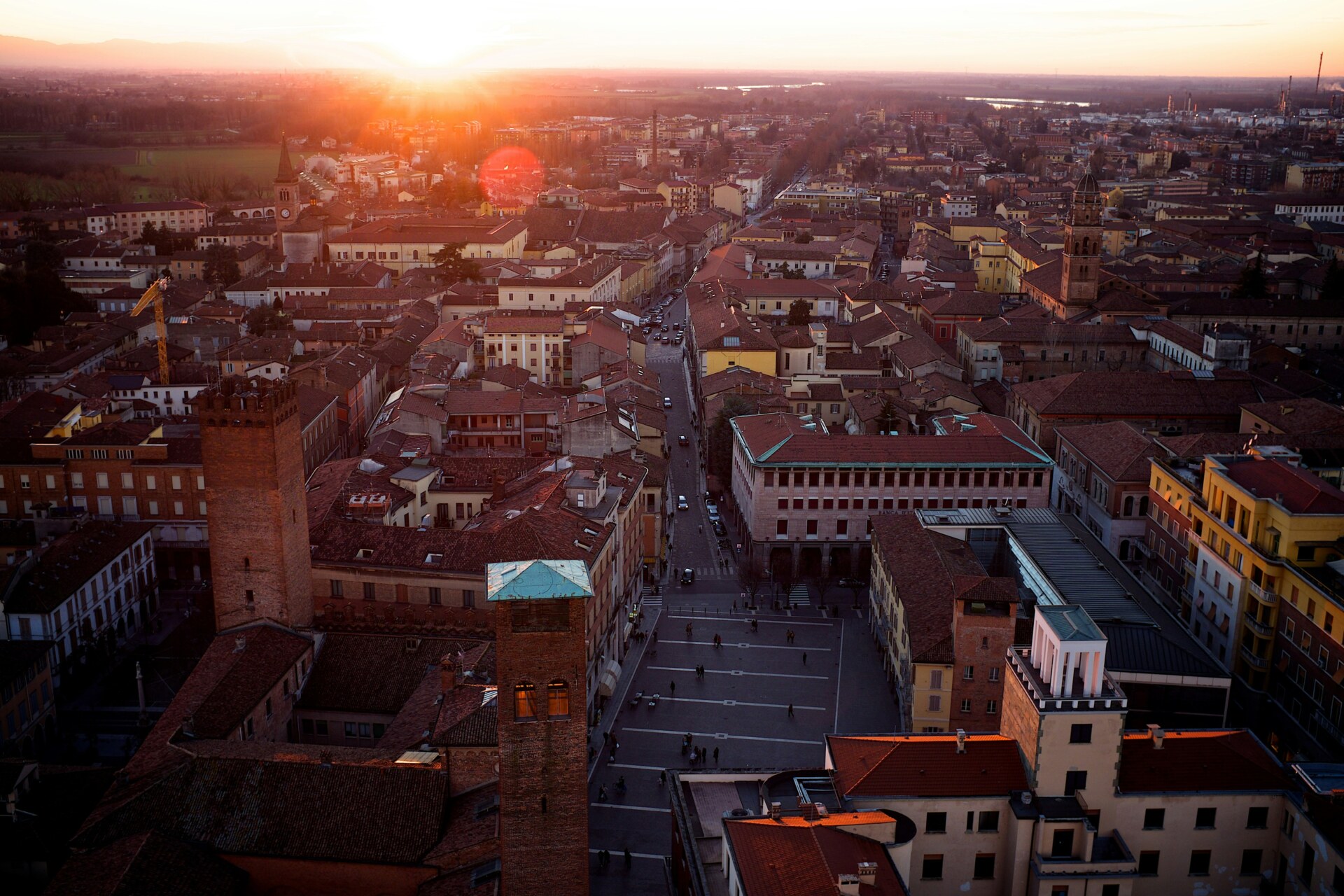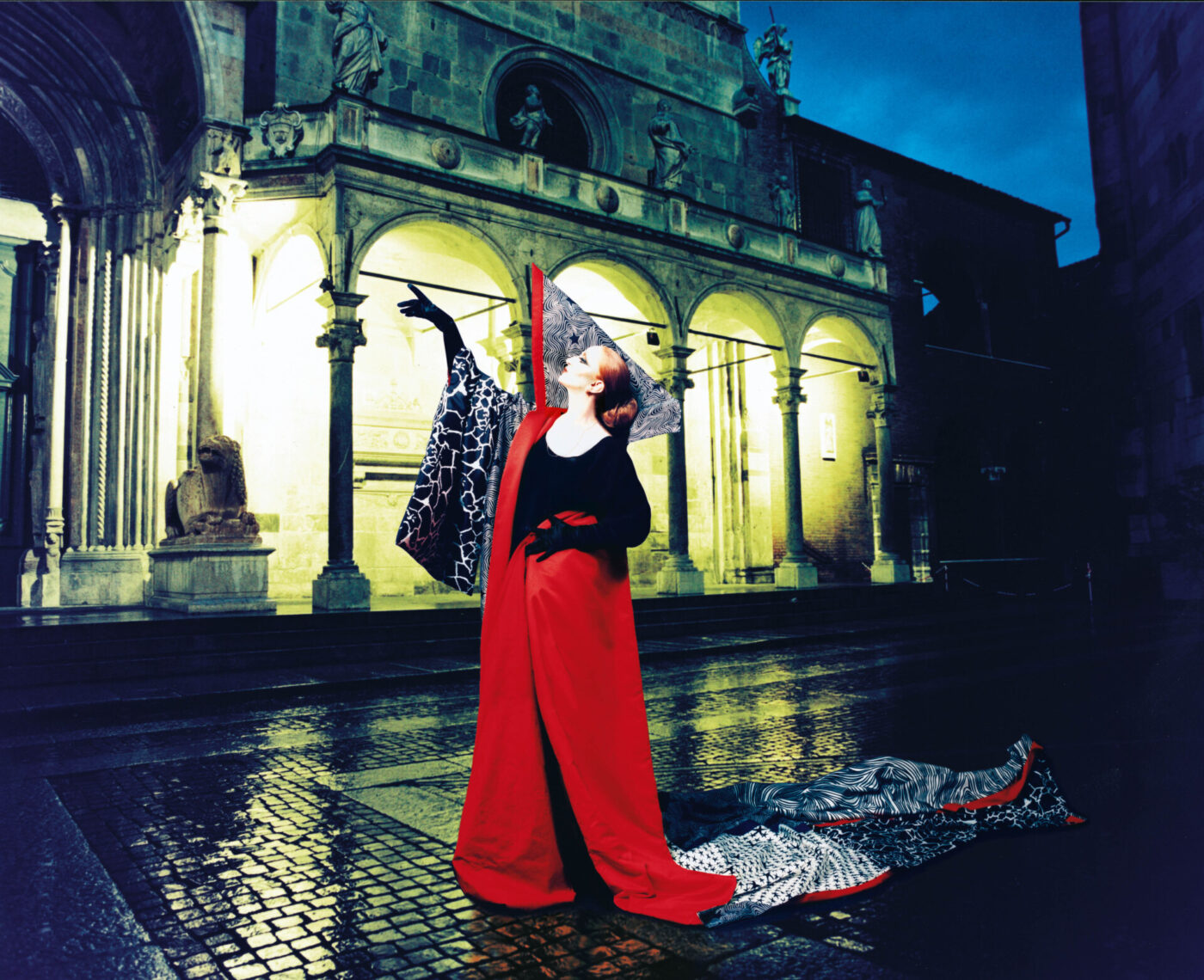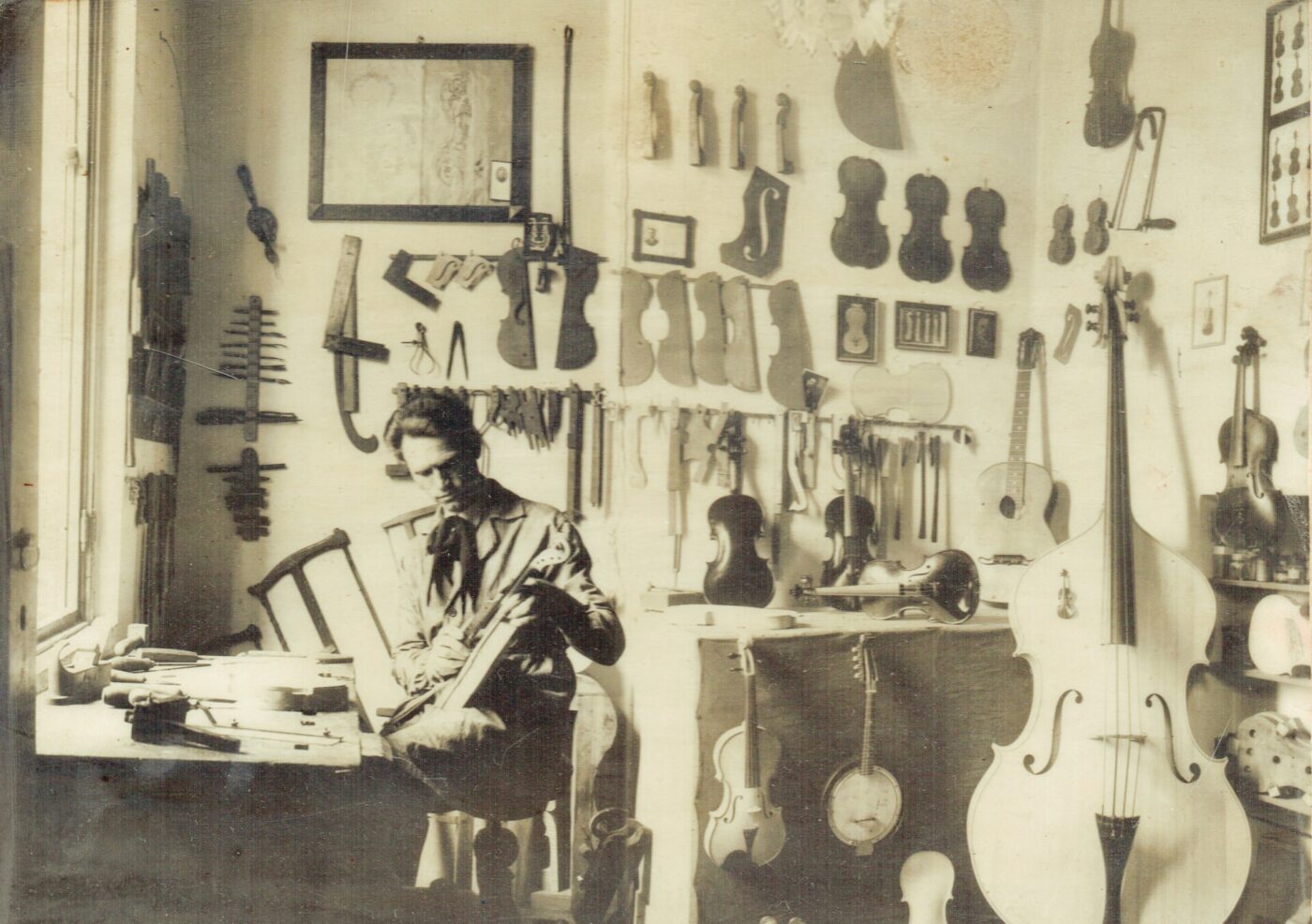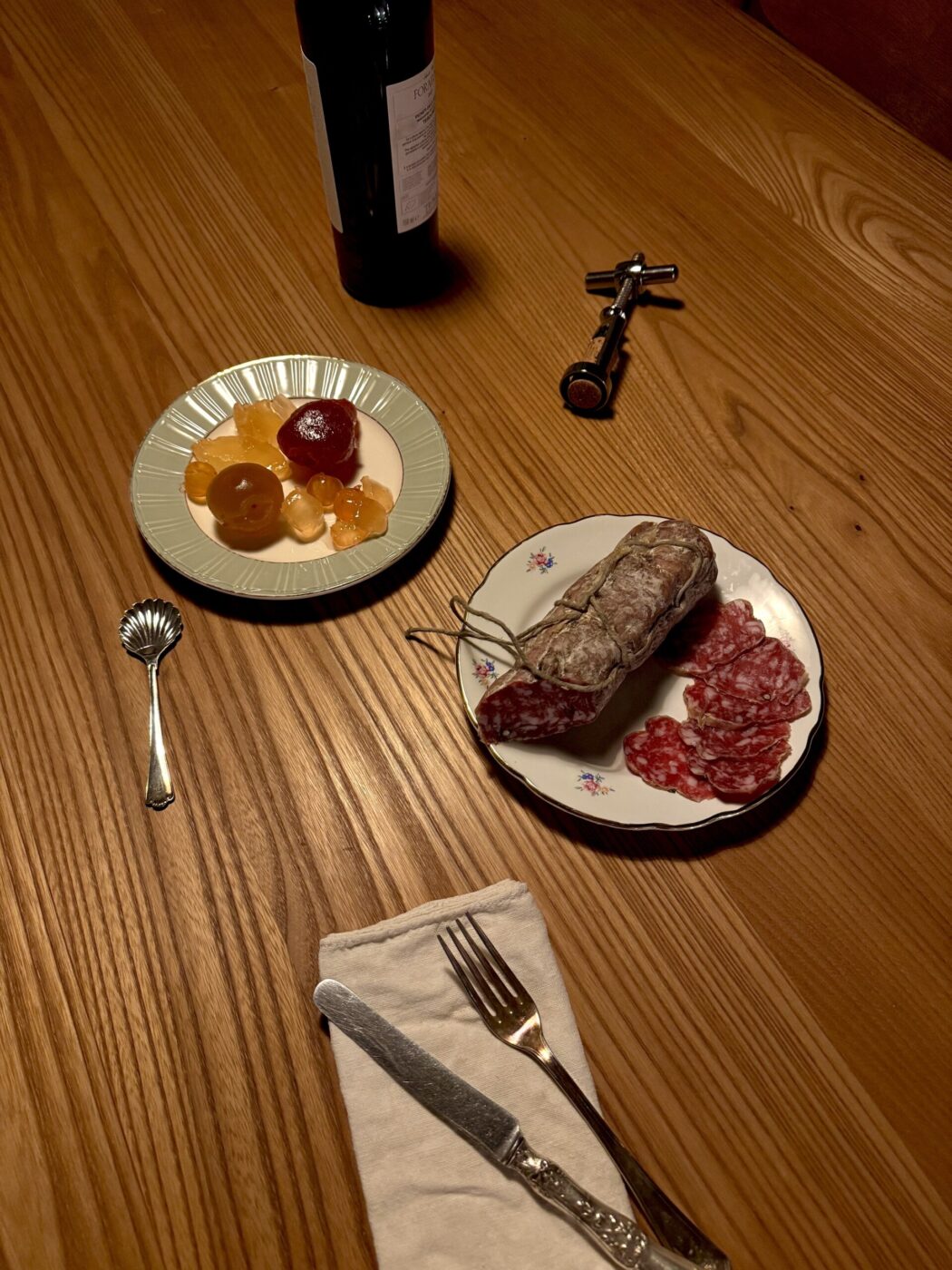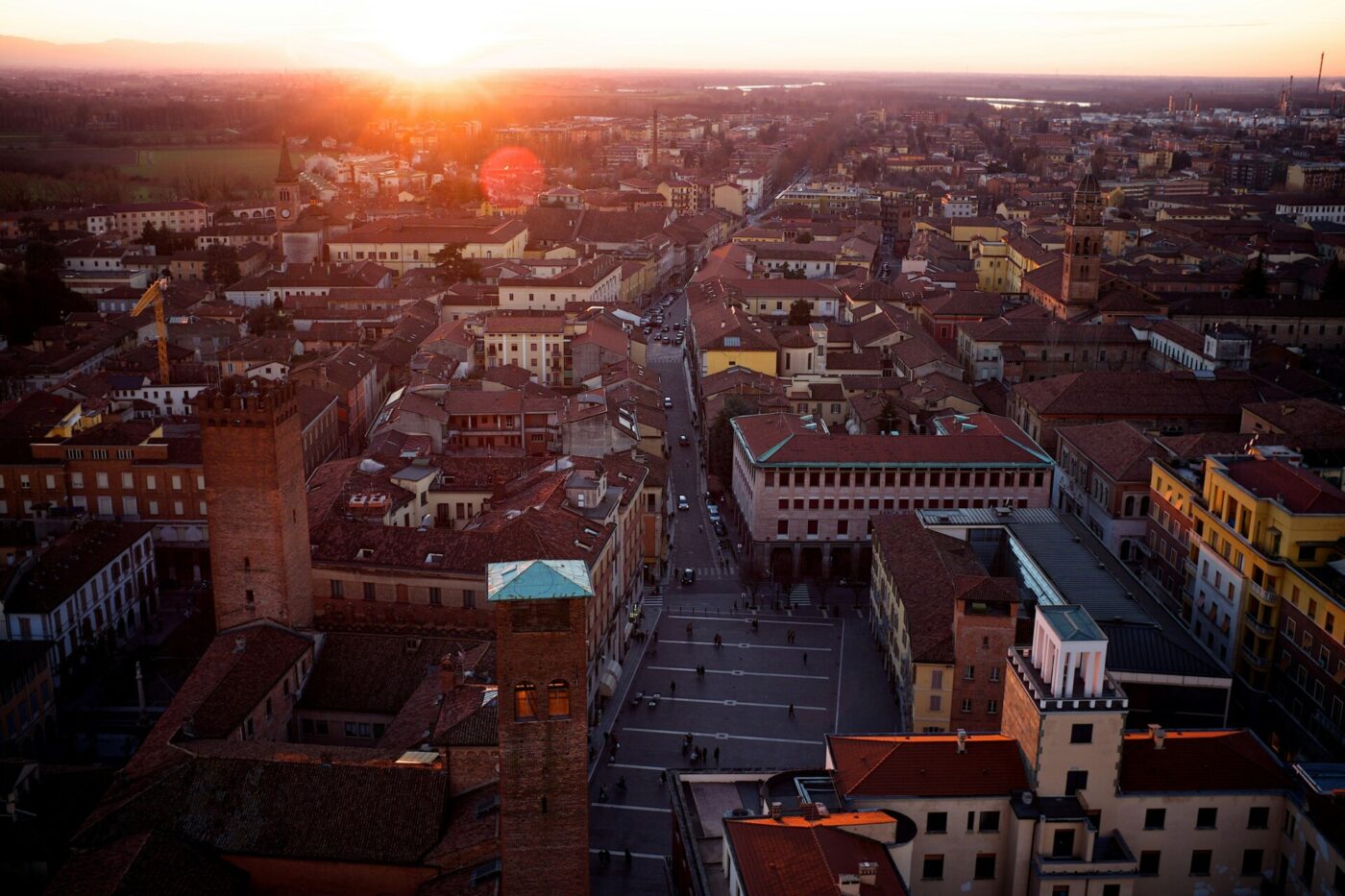The 70,000-large, Lombard city of Cremona hums with a musical legacy. Best known as the birthplace of Antonio Stradivari, Giuseppe Guarneri, and Andrea Amati, who invented the violin, it remains the global heart of violin-making, where luthiers (stringed instrument craftsmen) continue to handcraft instruments as they did in the 17th century. The city’s musicality is only bolstered by its latest prodigy, the legendary singer Mina, deemed la Tigre di Cremona (the Tigress of Cremona) and who named her 1996 album after the beloved town where she grew up.
Like Mina, Cremona marches to the beat of its own drum, doling out regional specialties like rich marubini in brodo (similar to tortellini), spicy mostarda, and torrone underneath the Torrazzo, the tallest brick bell tower in Europe, with a surrounding countryside that feels straight out of Call Me by Your Name–maybe, because, it is. Though the eponymous novel is set on the Italian coast, director Luca Guadagnino chose to shoot in the province of Cremona. “It is quintessentially Italian without being an idea of Italy,” he said, explaining the reasoning behind his choice. “It’s just Italy.”
Here, the best places to eat, drink, shop, visit, and stay in the melodic city.
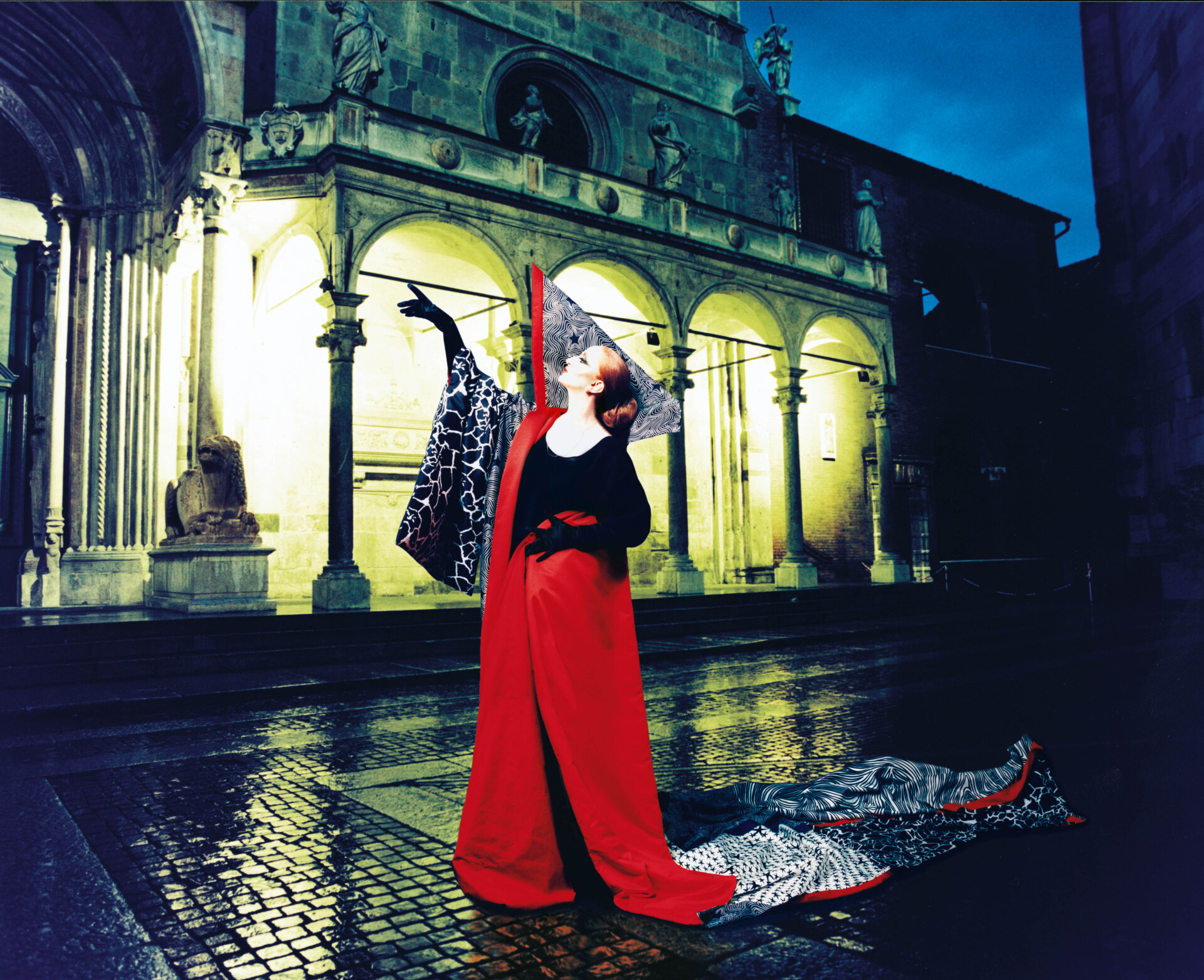
Mina in Versace for the Cremona cover (1996); photo by Mauro Balletti ©PDU
WHERE TO EAT IN CREMONA
Il Ginkgo – At this hip, new spot, Chef Lorenzo Barbieri–born and bred in Cremona–and his equally young, expert team bring their knowledge and experience from Michelin-starred restaurants around the world to Cremona. The menu overflows with contemporary twists on traditional Cremonese dishes: think marubini in three broths; local tortelli filled with ricotta di bufala, leeks in agrodolce, and cicadas; and pigeon with cime di rapa, bagna cauda, and anchovies. Reservations recommended.
Osteria La Sosta – Just steps from the cathedral, this charming osteria “of rest” has been run by the same family for three generations. It’s the spot for classic Cremonese food, under the current guidance of maître d’ Claudio Nevi. Everything on the menu is great, but favorites include the perfectly made marubini in brodo, Cremonese cotechino, and, in autumn and winter, the classic trolley of bolliti (various cuts of boiled meat).
La Lucciola – Right by the Po River, Roberto has carried on his parents’ tradition at this superb restaurant, adding his own taste and personal touch. The menu is filled with traditional dishes (including meatballs and frittata at the counter, just like old-school osterias!), a perfect Milanese-style cotoletta “ad orecchio di elefante” (elephant ear-style), and expertly fried seafood. There’s two indoor spaces–one more casual and one more intimate, depending on your vibe–and a beautiful outdoor space, best during summertime sunsets. Don’t skip the torta paradiso with cream for dessert.
Cascina Lago Scuro – Here, it’s real “farmhouse dining,” as co-owner Luca likes to call it. This stunning 18th-century estate is authentic, simple, and undeniably elegant–part organic farm, part superb restaurant, part caseificio, part summertime creative residency, and part wedding venue. Essentially everything they serve is grown, raised, or produced on the farm. Dinner–featuring a tasting menu–is preceded by an aperitivo, set to a DJ, in the beautiful park and limonaia. Check their website, as they’re only open on select dates. Reservations required.
Torrefazione Caffè Vittoria – The name is deceiving. Yes, it’s a coffee roastery (since the 1950s), but from breakfast until after-dinner, they offer a curated selection of wines, including several natural labels, alongside a small but well-thought-out menu–including dishes like a creamy egg with cauliflower, roast beef “tonnato”, and crostone with broccoli rabe and ricotta. Portions are on the smaller side, so order everything that catches your eye and share it with the table.
Antica Trattoria Cattivelli – On Isola Serafinin in the Po River, just outside Cremona’s city center, you’ll find this family-run restaurant, serving guests since 1947. Local dishes with 0km products such as pisarei e fasò (gnocchetti of flour and breadcrumbs tossed in a sauce of beans, lard, onion, and tomato) are all knockouts, but you really come here for the fresh water fish plates, like the cappelletti with sturgeon or the smoked trout.
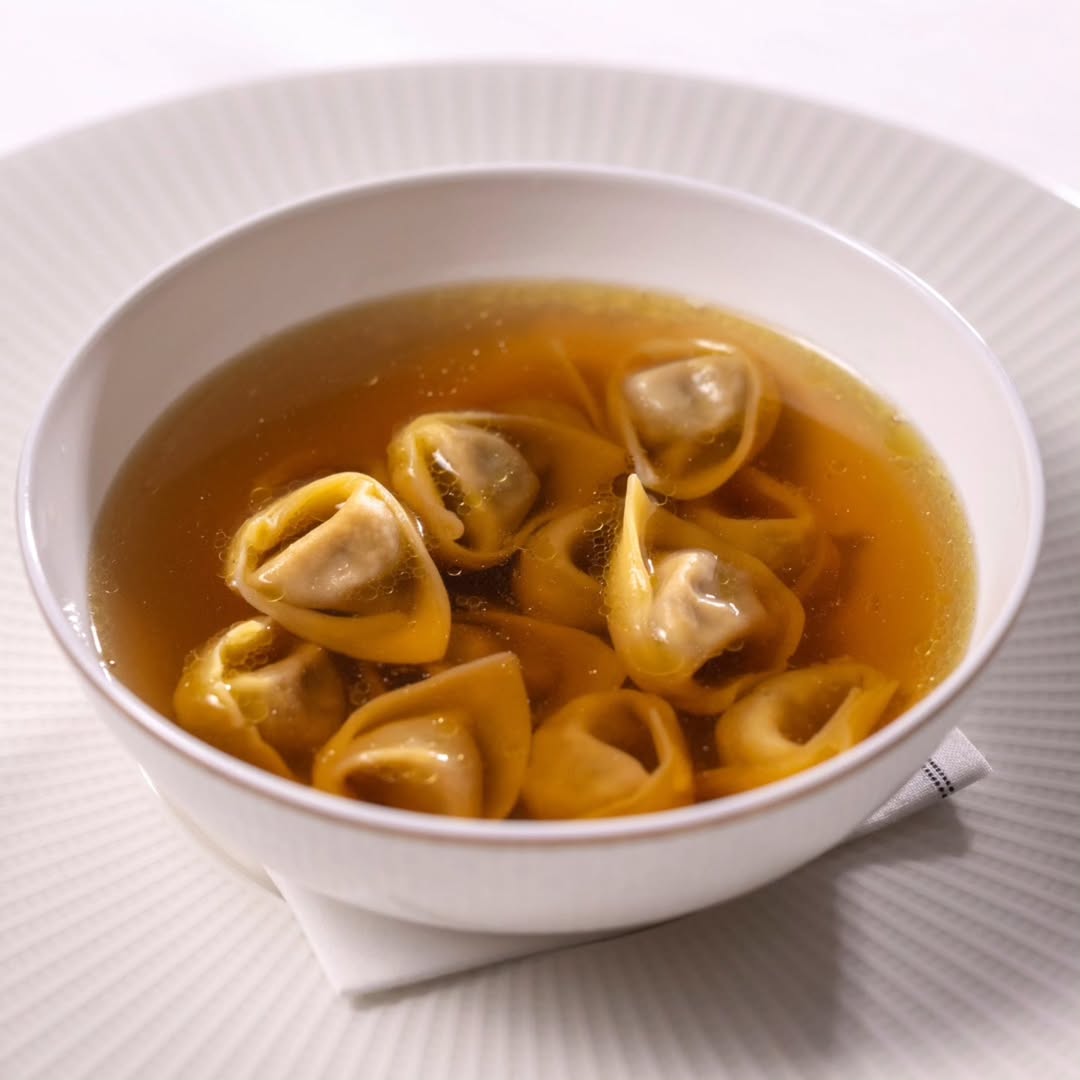
Il Ginkgo's marubini in three broths; Courtesy of @ilginkgo_ristorante
WHERE TO DRINK IN CREMONA
Spoon – This cozy cocktail bar is tucked into a city-center alley, with a menu including everything from imported beers to boozy mojitos to refined wine labels. They also host stand-up comedy and live music–check their Instagram for the schedule–so it makes a great spot to post up for the evening.
Caffetteria Al 41 – With small tables spilling out onto the sidewalk, this corner bar is open all day, pumping out espressos, quick lunches, and aperitivos. They’re most known, surprisingly, for their gin & tonics, with over 300 gin labels and a slew of tonics on offer. Their imaginative, personalized cocktails are delightful as well–trust the bartenders.
Somm – This minimalist enoteca, owned by friends Lorenzo, Luca, Riccardo, and Ottavia, prides itself on its selection of sustainable labels from small French and Italian producers–the smallest produces only 6,000 bottles a year. The bright shop is ideal for a quick aperitivo. Always ask for a recommendation on what to sip.
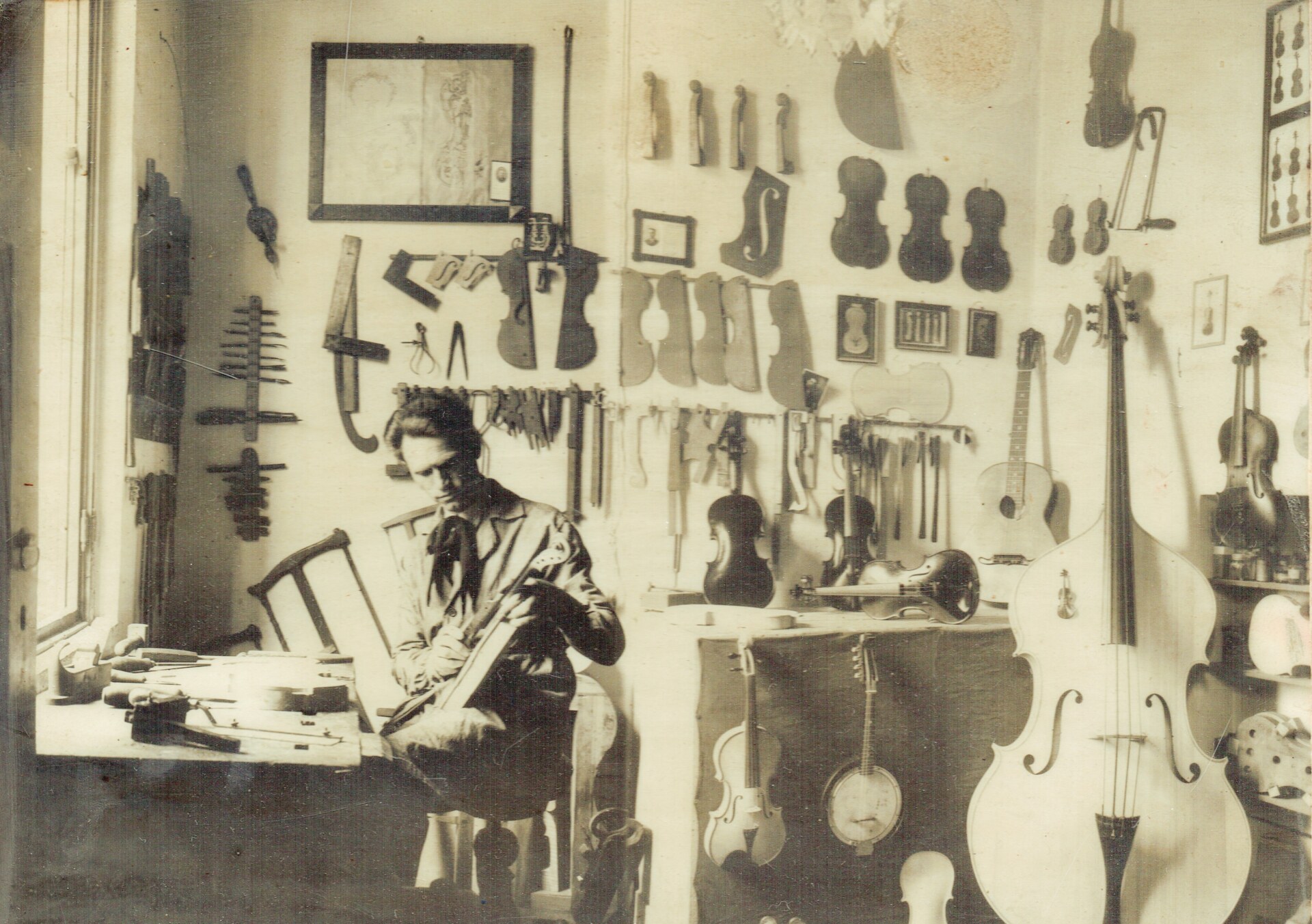
The luthier Luigi Galimberti, whose work you can see in The Violin Museum; By IlTaglia - Own work, CC BY-SA 4.0.
WHAT TO DO IN CREMONA
The Violin Museum (formerly the Stradivarius Museum) – This UNESCO museum is worth a stop to learn about the tradition of violin making in Cremona. The collection includes 700 drawings, shapes, and tools used by Stradivari in his workshop, plus plenty more relics, but the best part is the performances: Saturdays at noon, you can listen to violinists play music from the 1700s to today on Stradivari’s violins, in the stunning auditorium designed with perfect acoustics. Reservations recommended.
Parco Colonie Padane – This lush riverside park along the Po River is perfect for a leisurely escape into nature, with scenic walking paths, shaded picnic areas, and open spaces for sports and events. Originally developed as a heliotherapy resort in 1915, the park became the “Colonia Regina Margherita di Savoia e Balilla Roberto Farinacci” during the Fascist era–a summer facility designed to train Cremona’s youth in Fascist ideals, featuring a central ship-shaped building–before being abandoned. The striking example of Rationalist architecture was restored, along with the park, in 2016 and has become a favorite spot for locals.
Violin-Making Workshops – It’s no surprise that here, in the birthplace of the violin, there are over 150 luthiers in Cremona. It’s almost impossible to wander the alleys without seeing some artisan workshops to visit, but two favorites are Liuteria Cremonese and Bottega di Liuteria Philippe Devanneaux.
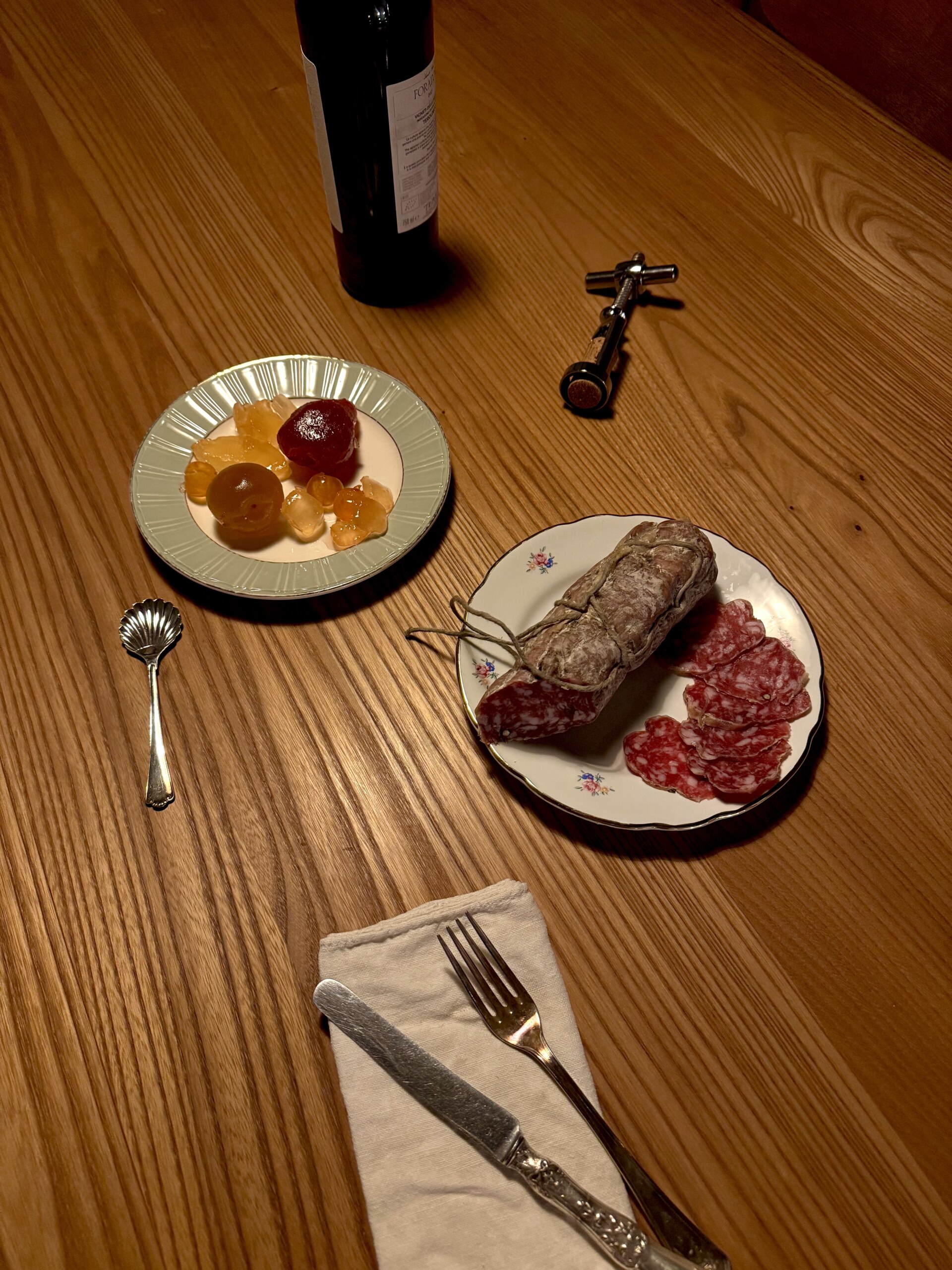
Mostarda and salame di Cremona
WHERE TO SHOP IN CREMONA
Cose – Along Corso Campi, this uber-hip clothing boutique features both designer labels and emerging brands. You can find options for men, women, and kids, and their Instagram is a great source of styling inspo.
Bidibà – For anyone looking to add a touch of style, elegance, and warmth to your home, this is the place to hit. A small concept store, with a great online shop, Bidibá features home decor in a carefully curated space, with mostly Nordic brands and an in-house line of Liberty-style textiles.
Sperlari – This historic shop on Via Solferino, open since 1836, has been serving Cremona locals and travelers with an endless selection of colorful candies and chocolates. Their two most famous products are the mostarda (a fruit-and-mustard condiment) and nougat, made the same way as founder Enea Sperlari did when he opened the shop 185 years ago.
Formaggi e Salumi d’Italia – Yep, you guessed it: this quaint shop sells traditional cured meats, cheeses, and other regional specialties–think fresh pastas, spiced mostarda, and crumbly torrone. For over 60 years, they’ve upheld the best of Cremonese gastronomic tradition.
WHERE TO STAY IN CREMONA
Cascina Farisengo – Right outside Cremona in the oft-overlooked Lombard countryside, this charming, family-run farmhouse B&B is set in a historic estate with a beautiful, 12,000-square-meter park. The 11 renovated rooms–a few of which accommodate pets–preserve the original farmhouse’s charm, and the included breakfast is fresh, bright, and 0km.


